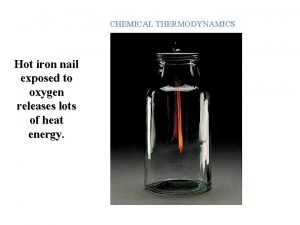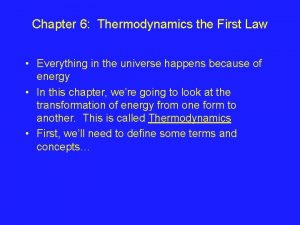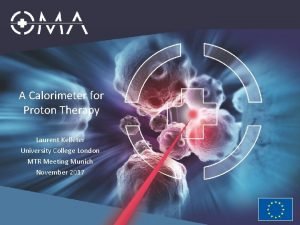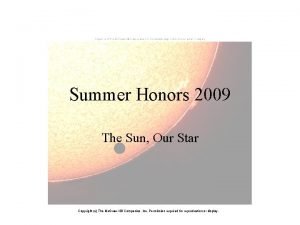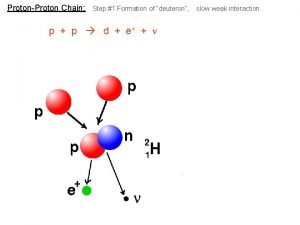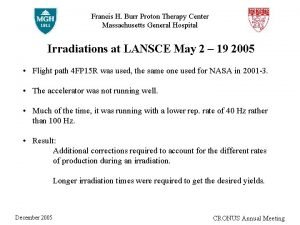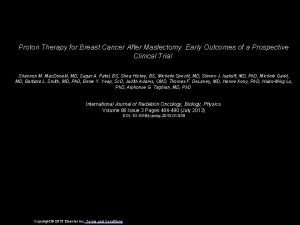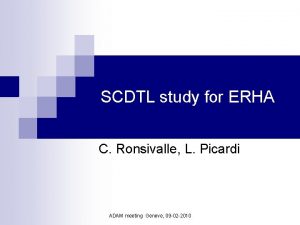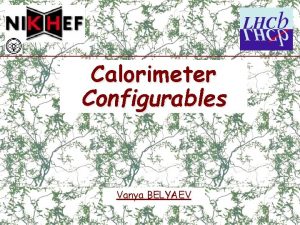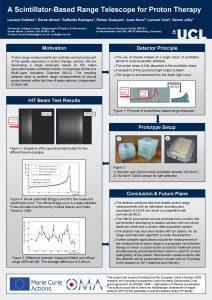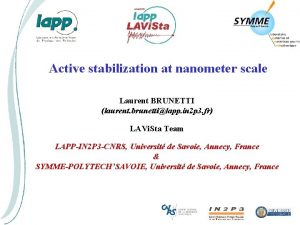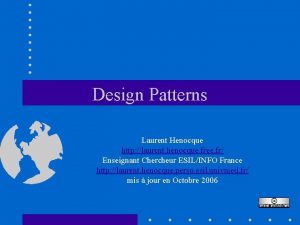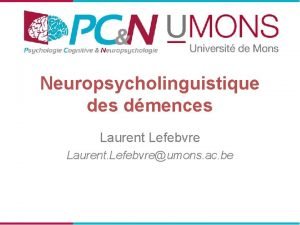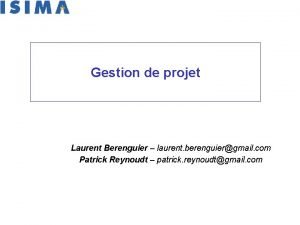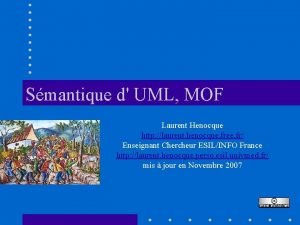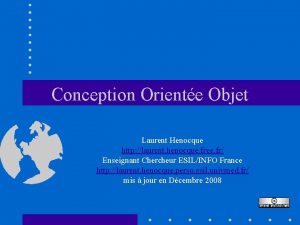A Calorimeter for Proton Therapy Laurent Kelleter University











- Slides: 11

A Calorimeter for Proton Therapy Laurent Kelleter University College London MTR Meeting Munich November 2017

Introduction • Background: – M. Sc. Particle Physics (RWTH Aachen) – Master project at intersection of HEP an Proton Beam Therapy (PBT) • Work within OMA: – Training: • Schools on Medical Accelerators, High-Energy Physics (HEP) and Soft Skills • Conferences on Acc. Physics, PBT and MC simulations • Participated in two beam tests in PBT Centres – Side project: Dose build-up in PBT • In collaboration with Medical Physics & Bioengineering • Purely simulation – Main focus: A calorimeter for PBT 13/11/2017 Laurent Kelleter – University College London

Quality Assurance (QA) in PBT • • Daily QA: Verify beam range at isocentre Commercial solutions (e. g. IBA Zebra) are expensive Manual scanning is slow (~1 hr) Detector requirements: – Precise: Energy resolution < 1% σ – Fast: one billion protons s-1 • Technology transfer from HEP? 13/11/2017 Laurent Kelleter – University College London

Super. NEMO Calorimeter • Super. NEMO aims to measure a hypothetical neutrinodouble-beta decay • Calorimeter developed at UCL • Plastic scintillator & photomultiplier tube less – Energy resolution of 7% FWHM (for 1 Me. V electrons) – Pulse length ~100 ns (maximum rate 10 million protons s-1) – Water equivalent scintillator https: //arxiv. org/pdf/1707. 06823. pdf 13/11/2017 Laurent Kelleter – University College London

Range Telescope • • • Cut scintillator in segments (sheets) Read out each sheet individually Integrate signal from many protons Reconstruct Bragg curve from photon output Measure range instead of energy 13/11/2017 Laurent Kelleter – University College London

Proton Range Reconstruction • Quenching: scintillation light production not linear to energy deposition • Developed model of a “quenched Bragg curve” • Three parameters: range, range straggling and intensity Figure: Geant 4 simulation of a range telescope 13/11/2017 Laurent Kelleter – University College London

Building a Range Telescope • Large number of channels requires expensive read-out system • Solution: “Monolithic Active Pixel Sensor” (MAPS) • Take “picture” of scintillation photon depth curve Scintillator block Beam 13/11/2017 Laurent Kelleter – University College London http: //eprints. lincoln. ac. uk/13879/ MAPS

Birmingham Beam Test • 28 Me. V proton beam: 7. 8 mm range in water • Measurement with two scintillator sheets (3 and 4 mm thick) • Two PRa. VDA Priapus MAPS (10 x 5 cm 2) Image taken by MAPS (108 protons s-1, 1 s integration time) MAPS Beam Scintillator sheets 13/11/2017 Laurent Kelleter – University College London Beam

Dose Build-up in PBT • Goal: Quantize dose build-up (BU) in PBT using Geant 4 • Distinguish between electron and proton build-up • Express BU as dose difference normalized to entrance dose Electron build-up Proton build-up Figure 1: 200 Me. V proton beam in a block of water 13/11/2017 Figure 2: Dose build-up vs. beam energy Laurent Kelleter – University College London

Conclusion • Summary – – – Beam tests with single-module detector show limitations Range telescope optimized in Geant 4 Developed model for range reconstruction Found solution for cheap readout of large number of channels (MAPS) First beam test shows promising results • Outlook – Improve software of read-out with MAPS – Build larger prototype – Make radiation hardness tests with scintillator • Impact – Extensive training at intersection of HEP and PBT – Prospect of building a commercial device for PBT 13/11/2017 Laurent Kelleter – University College London

Thank you for your attention This project has received funding from the European Union’s Horizon 2020 research and innovation programme under the Marie Sklodowska-Curie grant agreement No 675265, OMA – Optimization of Medical Accelerators. 13/11/2017 Laurent Kelleter – University College London
 Coffee cup calorimeter vs bomb calorimeter
Coffee cup calorimeter vs bomb calorimeter Coffee cup calorimeter equation
Coffee cup calorimeter equation Capacity to do work is called
Capacity to do work is called Kelleter aachen
Kelleter aachen Proton proton chain
Proton proton chain Fission reaction
Fission reaction Proton proton chain
Proton proton chain Francis burr proton therapy center
Francis burr proton therapy center Proton therapy for breast cancer after mastectomy
Proton therapy for breast cancer after mastectomy Erha proton therapy
Erha proton therapy Psychodynamic and humanistic therapies have in common
Psychodynamic and humanistic therapies have in common Bioness integrated therapy system occupational therapy
Bioness integrated therapy system occupational therapy

